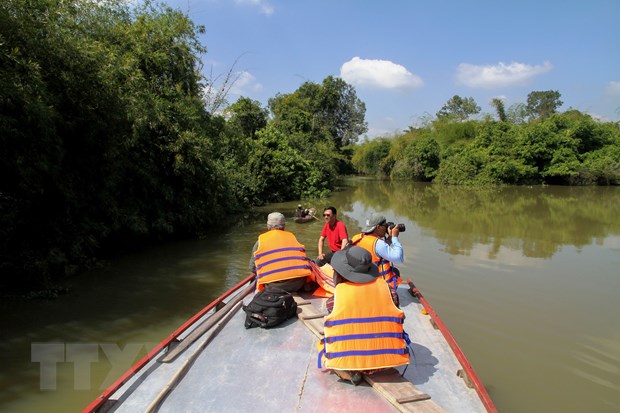 Life & Style
Life & Style

Authorities in the southern province of Tây Ninh have just merged Chàng Riệc Culture & History Forest and Lò Gò – Xa Mát National Park to form the new Lò Gò – Xa Mát National Park.

|
| A boat on Vàm Cỏ Đông River, which runs through the National Park in Tân Biên and Tây Ninh district. — VNA/VNS Photo Lê Đức Hoảnh |
HÀ NỘI — Authorities in the southern province of Tây Ninh have just merged Chàng Riệc Culture & History Forest and Lò Gò – Xa Mát National Park to form the new Lò Gò – Xa Mát National Park.
Vice Chairman of the province’s People’s Committee Trần Văn Chiến has just signed the official decision.
The new national park covers 30,000ha of natural forest covering six communes, namely Tân Lập, Tân Bình, Hòa Hiệp, Thạnh Tây, Thạnh Bắc and Thạnh Bình of Tân Biên District.
The newly-formed park borders Cambodia in the north and the west.
The park will continue to host a standard ecological system of dense forest with the biological features of a place joining the Tây Nguyên (Central Highlands) area, east southern area and Cửu Long (Mekong) River Delta together with endangered animals in order to maintain valuable species for future research and other purposes.
The management board of the park is also responsible for preserving national historical relics like the base of the Provisionary Revolutionary Government of the Southern Việt Nam Republic, the base of the Southern Central Department, and the base of the Southern Việt Nam People Liberation Front, which were used during the American War in Việt Nam.
The park is divided into three functional zones. The first zone is strictly protected, including over 10,600ha in Tân Bình and Tân Lập communes. The second zone is an area for biology recovery, covering over 19,000ha of Tân Lập, Tân Bình, Hòa Hiệp, Thạnh Tây, Thạnh Bắc and Thạnh Bình. The third zone is for administration offices, which covers over 130ha in communes of Tân Lập, Tân Bình, Thạnh Tây and Thạnh Bắc.
On March 21, 2020, Deputy Prime Minister Trịnh Đình Dũng sent an official document No 394/TTg NN on the guidelines to merge Chàng Riệc Culture & History Forest into Lò Gò – Xa Mát National Park following the proposal of the Agriculture and Rural Development Department to publish a decision to establish the new Lò Gò – Xa Mát National Park. — VNS




